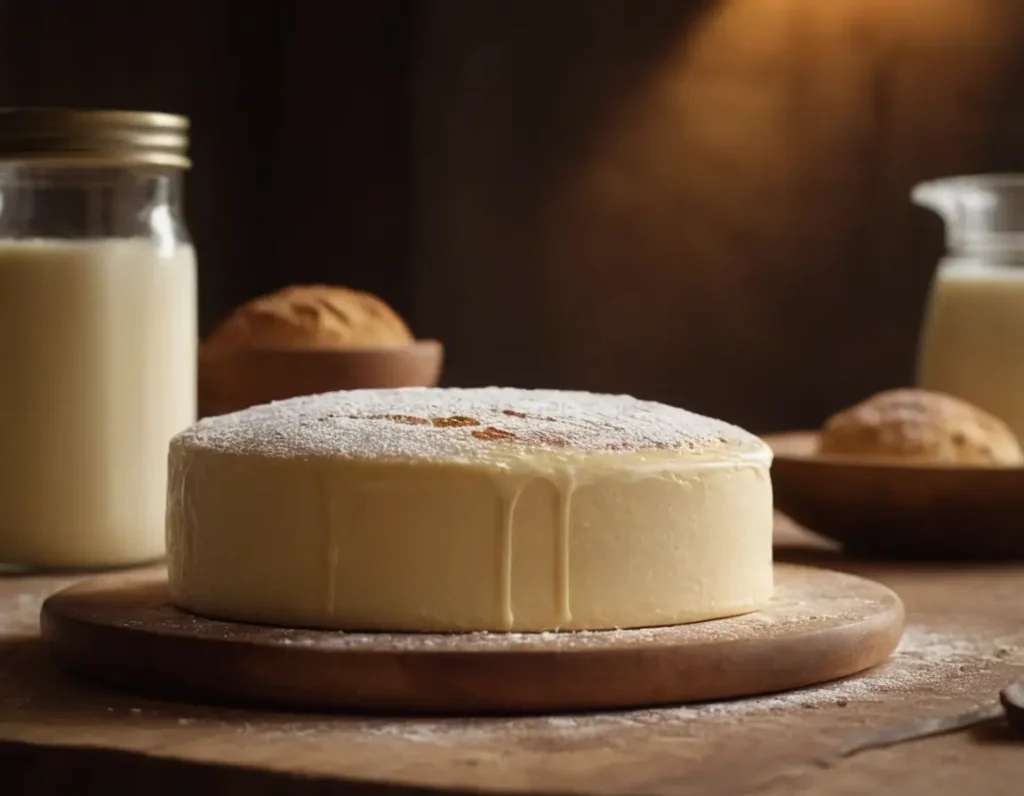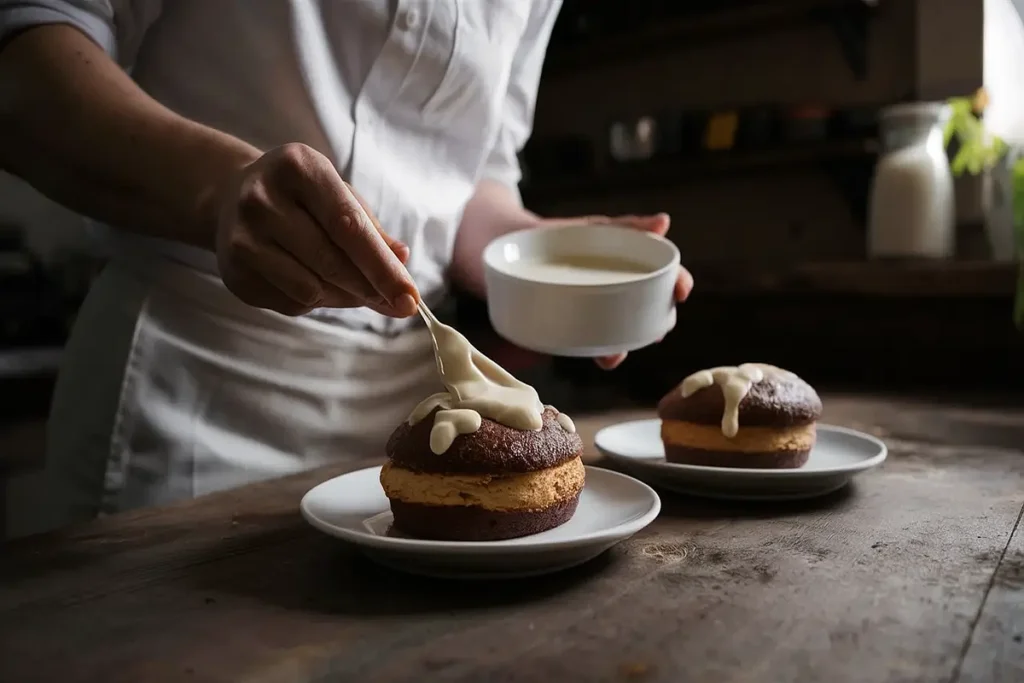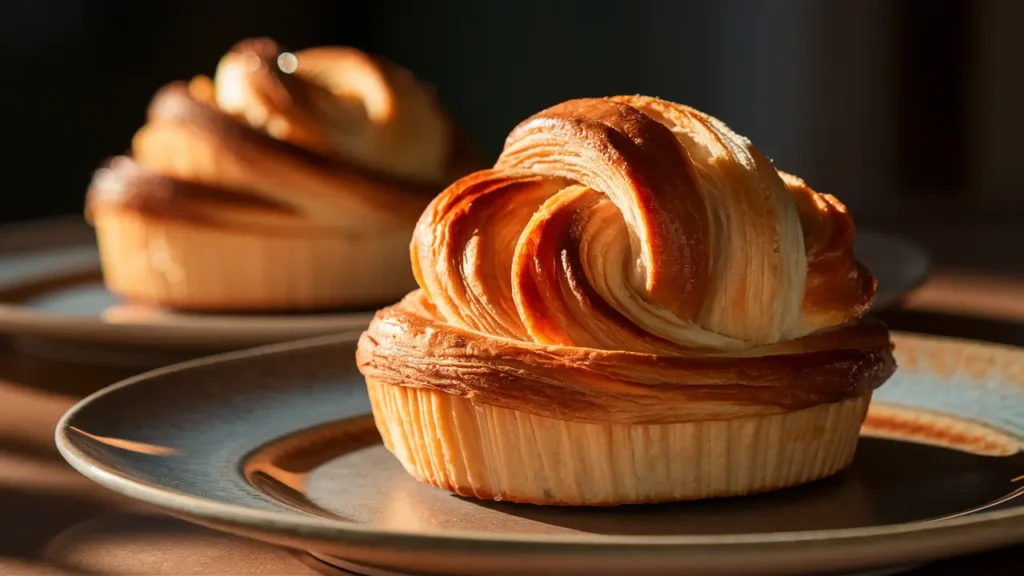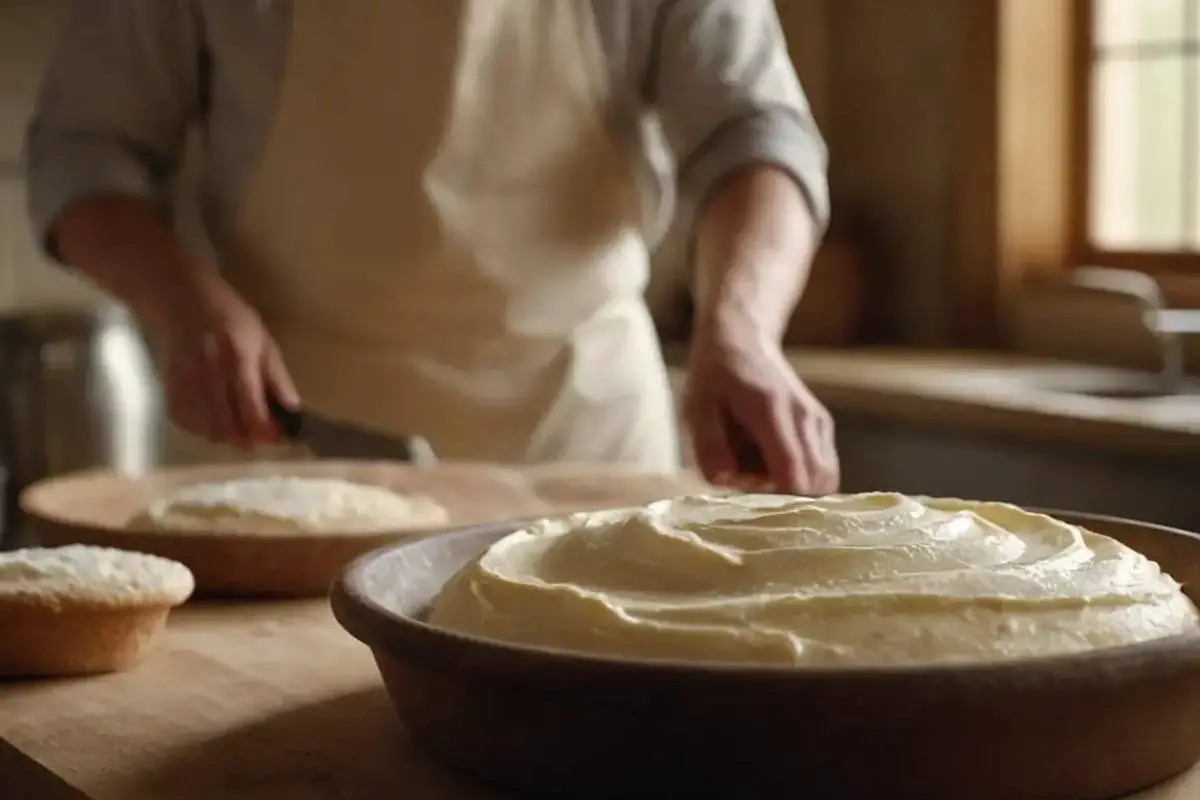Bakers have long cherished buttermilk as a secret ingredient, adding depth and character to all kinds of baked goods. Whether you’re making pancakes, muffins, or even bread, buttermilk brings something special to the table. But why do bakers like to use it so much? The answer lies in its unique ability to create a delicate balance of texture, flavor, and rise. Let’s dive into what makes buttermilk the go-to choice for bakers everywhere. But why do bakers like to use buttermilk so much?
What Is Buttermilk?
Before we get into why bakers love it, let’s first answer the question: What exactly is buttermilk? Traditionally, buttermilk was the liquid left behind after churning butter from cream. Nowadays, most of what we call buttermilk is cultured buttermilk, made by adding bacterial cultures to milk, similar to how yogurt is produced. The result is a tangy, slightly thicker milk that has a variety of uses, especially in baking.
The acidic nature of buttermilk makes it distinct from regular milk. This acidity is the key to why buttermilk works so well in recipes, helping with everything from tenderizing the dough to creating a more pronounced rise. You can read more about the science of how leavening agents work with buttermilk here.
Why Buttermilk Is Different from Regular Milk
Bakers often prefer buttermilk over regular milk due to its acidic profile. When buttermilk is combined with baking soda, a chemical reaction occurs that produces carbon dioxide. This reaction helps leaven baked goods, giving them a lighter, fluffier texture. In contrast, regular milk lacks the acidity needed to trigger this reaction, which is why it’s not as effective at making cakes rise or biscuits puff up.
From a nutritional standpoint, buttermilk also differs from regular milk. It typically contains less fat but is rich in calcium, vitamin B12, and probiotics. These probiotics contribute to better gut health, making it a somewhat healthier option for baked goods. For more details on the health benefits of buttermilk, you can check out this informative guide.
The Science Behind Buttermilk in Baking

The magic of buttermilk in baking can be explained by a simple chemical reaction. As mentioned earlier, buttermilk is acidic. When mixed with an alkaline substance like baking soda, the acid in the buttermilk reacts to form bubbles of carbon dioxide. These bubbles expand in the heat of the oven, creating lift and resulting in lighter, fluffier baked goods.
Additionally, the slight sourness of buttermilk works as a flavor enhancer, bringing out subtle notes in your recipe that regular milk may not. It adds a depth of flavor, especially in items like pancakes, biscuits, and scones.
The Role of Acidity in Baking with Buttermilk
Acidity plays a crucial role in baking, and buttermilk’s low pH is what makes it such an effective ingredient. When you’re working with recipes that involve baking soda, this acidity is vital because it helps balance the pH and allows the leavening process to occur. Just like vinegar in muffins, the acidity in buttermilk plays a vital role in balancing the pH levels in baked goods. Learn more about it here.
Buttermilk also slows down the Maillard reaction, which is responsible for browning in baked goods. This means your cakes and biscuits will have a beautiful golden-brown exterior without burning too quickly, giving them more time to cook evenly.
Moisture and Tenderness: Buttermilk’s Impact on Texture
One of the most valued traits of buttermilk in baking is the moisture it brings to the dough or batter. Because buttermilk is slightly thicker than regular milk, it helps maintain moisture content in baked goods, which leads to a softer, more tender texture. This is why biscuits made with buttermilk have that soft, melt-in-your-mouth quality, while those made with regular milk can sometimes feel dense or dry.
Buttermilk also works to break down the gluten in flour, which contributes to a more tender crumb structure. This is particularly beneficial in cakes and quick breads, where a delicate texture is preferred over a chewy one.
Why Buttermilk Leads to Better Rise and Lighter Bakes
Have you ever noticed how pancakes made with buttermilk are light and fluffy? That’s thanks to the combination of acidity and leavening agents. When you mix buttermilk with baking soda, it produces carbon dioxide gas, which expands in the heat of the oven or griddle. The result? Baked goods that are lighter, fluffier, and have a better rise compared to those made with regular milk.
This is also why buttermilk is often used in recipes for muffins, quick breads, and even some cakes. The extra lift it provides makes these items airier and more enjoyable to eat.
Flavor Boost: The Tangy Taste of Buttermilk
Another reason bakers love buttermilk is for its distinct, tangy flavor. While regular milk has a neutral taste, buttermilk brings a slight sourness that adds complexity to baked goods. This tangy profile pairs particularly well with sweet ingredients, creating a balanced flavor profile.
Think about recipes like buttermilk pancakes or biscuits: the slight tang of the buttermilk cuts through the richness of butter or sugar, giving these treats a more refined taste. The next time you bite into a moist, flavorful cake or a tender muffin, you might just have buttermilk to thank!
What Types of Baked Goods Use Buttermilk?

Buttermilk is a versatile ingredient found in many beloved baked goods. Its ability to enhance both texture and flavor makes it a popular choice for:
- Pancakes and Waffles: Buttermilk creates fluffy pancakes and waffles with a slightly tangy flavor that balances out sweetness.
- Biscuits: Southern-style biscuits often rely on buttermilk to achieve a soft, tender crumb with a rich, buttery flavor.
- Cakes: Many cake recipes, especially those for moist and tender cakes like red velvet, call for buttermilk. It helps the cake rise and keeps it moist.
- Muffins: The acidity of buttermilk interacts with leavening agents, creating airy and light muffins.
- Scones: Buttermilk adds both moisture and flavor, giving scones a soft interior and a crispy exterior.
These baked goods benefit from buttermilk’s ability to boost both the flavor and the texture, making them a baker’s best friend.
Substituting Buttermilk in Baking Recipes
But what happens if you’re in the middle of a recipe and realize you’re out of buttermilk? Don’t worry, there are several easy substitutes that maintain a similar texture and flavor:
- Lemon Juice or Vinegar + Milk: Add 1 tablespoon of lemon juice or vinegar to 1 cup of milk. Let it sit for 5–10 minutes until it curdles slightly, mimicking the acidity of buttermilk. For more details on how buttermilk compares to heavy cream in baking, check out this guide on using buttermilk instead of heavy cream in pies.
- Yogurt or Sour Cream + Water: Mix an equal part of yogurt or sour cream with water to thin it out. This is a great alternative, especially for moist cakes or muffins.
- Cream of Tartar + Milk: Use 1 ¾ teaspoon of cream of tartar with 1 cup of milk for a similar acidity profile.
Each of these alternatives works in a pinch, but they may slightly alter the final flavor or texture of the baked goods. For more tips on how to substitute buttermilk, check out this guide on buttermilk substitutes.
Health Benefits of Baking with Buttermilk
Beyond its culinary uses, buttermilk offers some surprising health benefits:
- Low in Fat: Cultured buttermilk is typically lower in fat than regular milk, making it a healthier option for those looking to reduce their fat intake.
- Rich in Probiotics: Buttermilk contains probiotics, beneficial bacteria that promote gut health. This is similar to the bacteria found in yogurt.
- High in Calcium and Vitamins: Buttermilk is an excellent source of calcium, vitamin D, and vitamin B12, which are essential for bone health and overall wellness.
Baking with buttermilk doesn’t just make your cakes fluffier or biscuits softer—it can also boost the nutritional profile of your treats.
How Buttermilk Affects Baking Time and Temperature

Baking with buttermilk can also influence how your baked goods cook. Its higher acidity can affect browning and moisture retention, which in turn impacts baking time and temperature.
- Slower Browning: Because buttermilk reduces the pH of the batter or dough, it can slow down browning during baking. This gives you a more even bake with less risk of burning.
- Moisture Retention: Buttermilk helps keep baked goods moist for longer, meaning you might not need to bake them for as long as you would with regular milk.
- Lower Oven Temperature: For recipes using buttermilk, consider reducing the oven temperature by a few degrees to avoid over-browning.
These factors make it essential to keep an eye on your baked goods when using buttermilk, ensuring a perfect bake every time.
Buttermilk in Gluten-Free Baking
Buttermilk isn’t just for traditional baking. It’s also a fantastic ingredient in gluten-free baking. Gluten-free flours often produce denser, drier baked goods because they lack the elasticity that gluten provides. This is where buttermilk shines:
- Moisture Boost: Buttermilk helps add moisture to gluten-free batters, making the final product softer and less crumbly.
- Improved Texture: The acidity in buttermilk helps tenderize gluten-free flours, resulting in a more pleasant, lighter texture.
- Better Rise: Gluten-free recipes often struggle to rise as much as their gluten-filled counterparts, but buttermilk’s acidic nature helps give them an extra lift.
If you’re working with gluten-free recipes, buttermilk can be a game-changer in terms of both texture and flavor.
Can You Use Buttermilk in Bread Baking?
While buttermilk is most commonly associated with pancakes, muffins, and cakes, it can also be used in bread baking. The key is knowing when and how to use it:
- Buttermilk Bread: Buttermilk can be used in soft breads like sandwich loaves to improve tenderness and add a slight tang.
- Quick Breads: For quick breads like banana bread or cornbread, buttermilk works wonders by creating a tender, moist crumb.
- Sourdough Starter: Some bakers even use buttermilk in sourdough starters to help kickstart the fermentation process.
Using buttermilk in bread-making results in a softer texture and more flavorful loaf, perfect for both sweet and savory applications.
Common Mistakes When Using Buttermilk in Baking
Even though buttermilk is a fantastic ingredient, there are a few common mistakes to avoid when using it:
- Overmixing: Because buttermilk tends to react quickly with baking soda, overmixing can knock out the air bubbles, leading to denser baked goods. Mix gently to keep the batter light.
- Wrong Amount: Using too much or too little buttermilk can alter the texture and rise of your baked goods. Always measure carefully according to the recipe.
- Expired Buttermilk: Fresh buttermilk is key for the best results. Using expired buttermilk can lead to curdling or unpleasant flavors.
Being mindful of these potential pitfalls ensures that you get the best out of buttermilk every time.
How to Make Your Own Buttermilk at Home
Can’t find buttermilk in your local store? No problem! Making your own buttermilk at home is simple:
- Milk + Lemon Juice: Add 1 tablespoon of lemon juice or vinegar to 1 cup of milk.
- Let It Sit: Allow the mixture to sit for 5–10 minutes until it begins to curdle slightly.
- Ready to Use: Your homemade buttermilk is ready to use in any baking recipe.
This quick and easy method provides the same acidity and consistency as store-bought buttermilk, so you’ll still achieve the desired results in your recipes.
Conclusion: Why Buttermilk Is a Baker’s Secret Weapon
Now that you know why bakers like to use buttermilk, it’s time to try it in your next recipe. From its ability to tenderize dough to its role in leavening, buttermilk is an essential ingredient that every baker should keep in their kitchen. Its versatility makes it perfect for everything from biscuits to gluten-free cakes, and its tangy flavor adds complexity to baked goods. Whether you’re a seasoned baker or just starting out, buttermilk is the secret ingredient that can take your baking to the next level.
FAQs
- Can you freeze buttermilk for future baking?
Yes, you can freeze buttermilk in ice cube trays or airtight containers for up to three months. Thaw it in the refrigerator before using it in baking. - Is buttermilk suitable for vegans?
Traditional buttermilk is not vegan, but you can make a vegan substitute using plant-based milk (like almond or soy milk) combined with lemon juice or vinegar. - How long does buttermilk last in the fridge?
Buttermilk typically lasts 1–2 weeks after its expiration date if properly stored in the refrigerator. - Can buttermilk be used in savory baking?
Yes! Buttermilk is great for savory dishes like cornbread, biscuits, and even some types of savory scones. - Does buttermilk make cakes fluffier?
Absolutely. The acidity in buttermilk reacts with baking soda, creating carbon dioxide bubbles that give cakes a lighter, fluffier texture.

